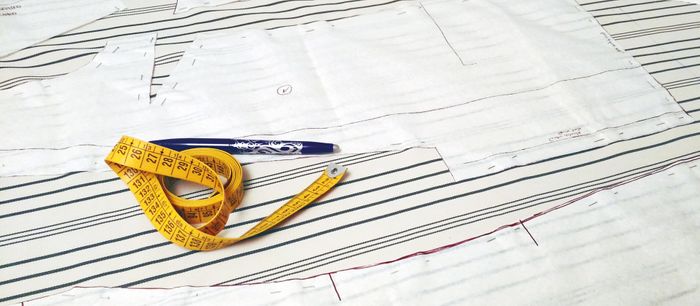Embellishments: How to Create Scalloped Piping
Create a custom edge with your sewing machine
A self-fabric piping or decorative trim can add considerable interest to an otherwise ordinary neckline, armhole, or other edge. This sweet scalloped piping is easy to create with the blind-hem stitch or shell-hem stitch on your sewing machine.
This piping effect works on knits and wovens, for dressy or casual garments. It’s particularly attractive on cotton, satin, handkerchief linen, and soft silk. Made from cotton knit or jersey and used to finish a T-shirt, it takes on a relaxed, cute vibe.
Fabrics that are thick, bulky, or stiff don’t give the desired effect because they resist being shaped by the stitch. However, you may be able to enhance the effect by increasing the needle thread tension on your machine. A spongy filler, such as wadding or acrylic yarn, also makes it easier for the zigzag stitch to shape the fabric and create scallops. Sew tests on scrap fabric to determine whether your machine’s blind-hem stitch or its shell-hem stitch gives the best result.
Once you give scalloped piping a try, you’ll likely agree that few embellishments are as pretty and simple.
1 Cut enough bias strips for the edges receiving the piping. Even if you have chosen a knit, cut the strips on the bias. Make the strips 2 inches to 2-1⁄2 inches wide and as long as possible. Try to avoid seams, as they can be bulky and disrupt the scalloped edge. With wrong sides together, fold the strips in half, lengthwise.
2 Install a satin-stitch foot. Reduce the presser-foot pressure. Set the blind-hem or shell-hem stitch to its widest setting. The stitch length should be between 2.0 mm and 3.5 mm, depending on the desired size of each scallop. Place the folded strip on the machine bed with the fold pointing in the same direction that…
Start your 14-day FREE trial to access this story.
Start your FREE trial today and get instant access to this article plus access to all Threads Insider content.
Start Your Free TrialAlready an Insider? Log in





Log in or become a member to post a comment.
Sign up Log in